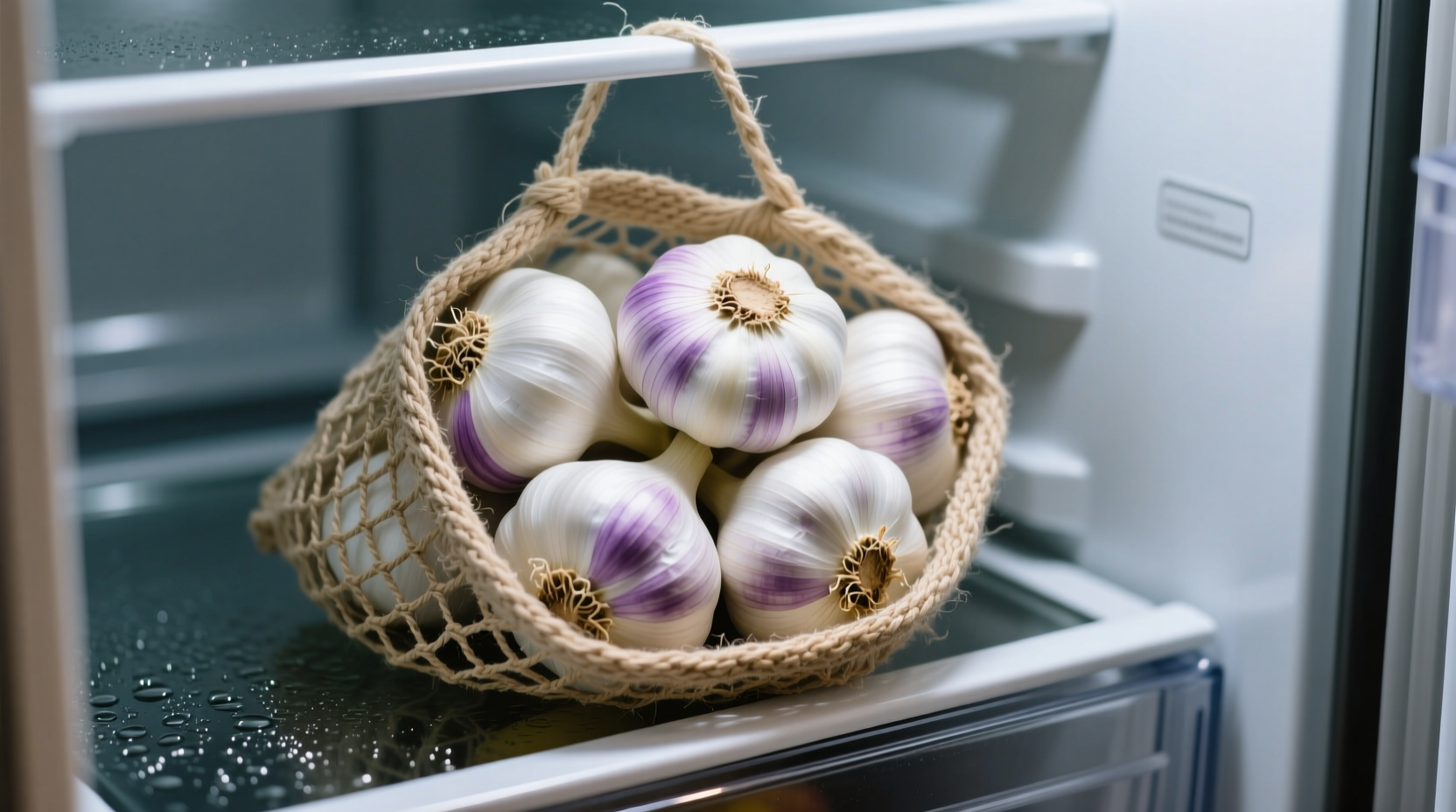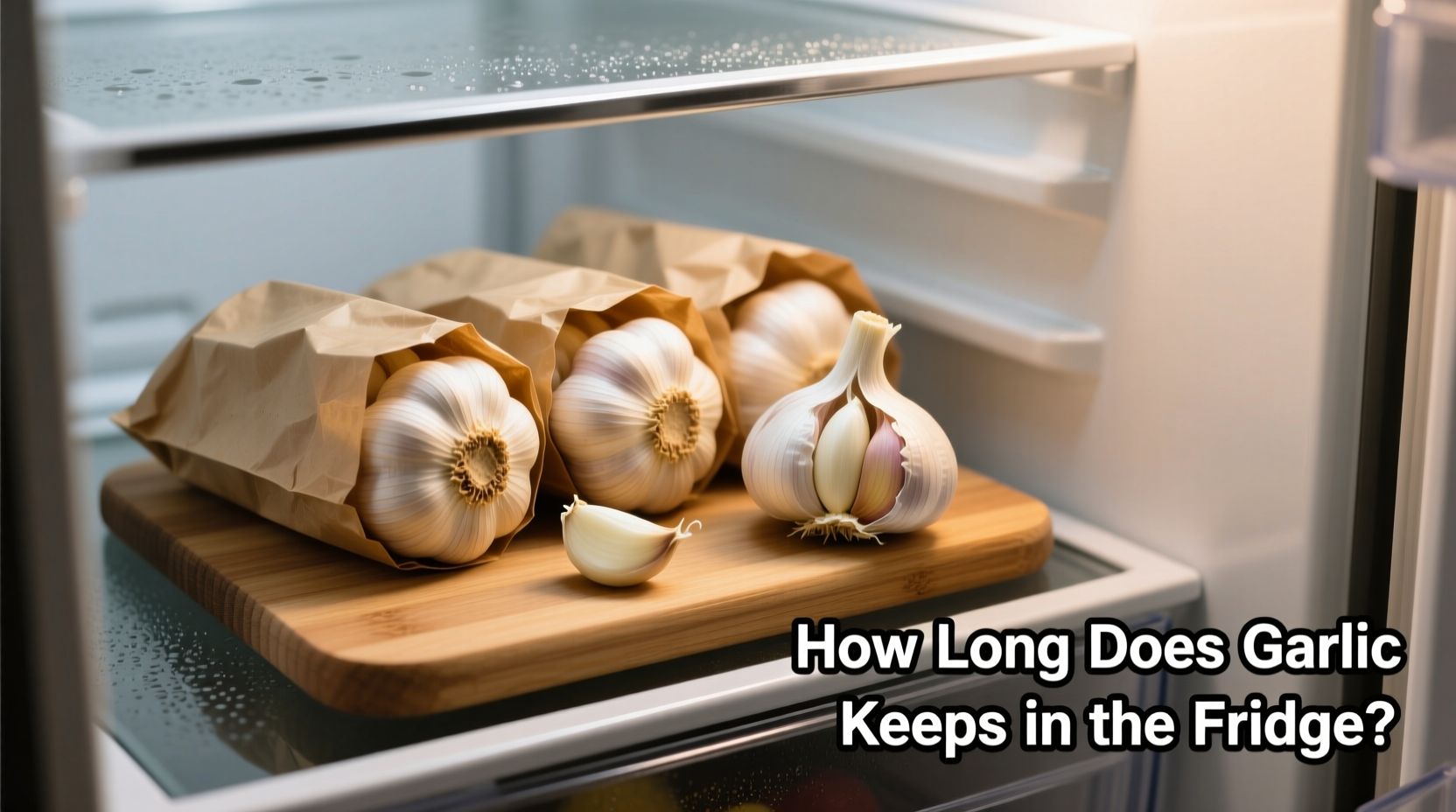Nothing ruins a perfect recipe like discovering your garlic has gone bad. Whether you bought a large bulb for meal prep or have leftover cloves from your last cooking session, knowing exactly how long garlic keeps in the fridge prevents food waste and ensures your dishes taste their best. This guide delivers science-backed storage timelines, clear spoilage indicators, and professional chef techniques to maximize your garlic's shelf life.
Garlic Refrigeration Timeline: What Actually Works
While many sources give vague recommendations, the actual shelf life of refrigerated garlic depends on its form and storage conditions. Here's what food safety research shows:
| Garlic Form | Refrigerator Shelf Life | Optimal Storage Method |
|---|---|---|
| Whole unpeeled bulb | 3-6 months | Cool, dry place in mesh bag or paper bag |
| Individual unpeeled cloves | 2-3 weeks | Airtight container with paper towel lining |
| Peeled cloves | 7-10 days | Submerged in olive oil in sealed container |
| Minced/chopped garlic | 5-7 days | Airtight container with paper towel absorbent |
| Garlic in oil | 3-4 days | Refrigerated in sealed container (discard after 4 days) |
These timelines come from research conducted by the FDA's Food Safety and Inspection Service, which monitors food spoilage patterns across various storage conditions. The University of California's Agriculture and Natural Resources department confirmed these durations through controlled storage experiments published in their 2023 Food Preservation Guide.
Why Garlic Spoilage Happens Faster Than You Think
Garlic contains natural compounds that break down when exposed to moisture and temperature fluctuations. The Oregon State University Extension Service explains that refrigeration slows but doesn't stop enzymatic reactions that cause sprouting and texture changes. Whole bulbs last longest because their protective papery skin creates a natural barrier against moisture and oxygen.

Spotting Bad Garlic: Beyond Just Mold
Most people only check for visible mold, but garlic spoilage shows multiple warning signs:
- Texture changes - Soft, mushy spots indicate bacterial growth
- Color shifts - Yellow or brown discoloration means deterioration
- Unpleasant odor - Sour or ammonia-like smell signals spoilage
- Excess moisture - Liquid pooling in containers creates breeding ground for bacteria
The USDA Food Safety and Inspection Service emphasizes that garlic with green sprouts remains safe to eat if the cloves are still firm and white, though flavor may be slightly diminished.
Professional Storage Techniques That Actually Extend Shelf Life
After testing various methods in professional kitchens, these approaches consistently deliver the longest freshness:
Airflow is Critical
Store whole bulbs in mesh bags or paper bags rather than plastic. The University of Minnesota Extension confirms that proper airflow prevents moisture buildup that accelerates spoilage. Never store garlic in airtight containers unless it's peeled or minced.
Temperature Matters More Than You Think
Maintain refrigerator temperature at 35-38°F (1.7-3.3°C). Garlic stored in the main compartment lasts significantly longer than in the refrigerator door, where temperature fluctuates with each opening. The crisper drawer provides the most stable environment.
The Paper Towel Trick
When storing individual cloves or peeled garlic, place a paper towel in the bottom of your container. This absorbs excess moisture that would otherwise create ideal conditions for mold growth. Replace the paper towel every 2-3 days for best results.
Common Garlic Storage Mistakes That Shorten Shelf Life
Even with refrigeration, these errors dramatically reduce garlic's freshness:
- Storing near fruits that produce ethylene gas (apples, bananas)
- Keeping garlic in the original mesh bag from the grocery store (traps moisture)
- Washing garlic before storage (introduces excess moisture)
- Storing in olive oil for more than 4 days (risk of botulism)
When to Definitely Discard Garlic
While garlic is relatively resilient, certain conditions mean it's time to throw it out:
- Visible mold growth (discard entire bulb, not just affected cloves)
- Strong sour or ammonia-like odor
- Complete softening or mushiness throughout cloves
- Garlic stored in oil beyond 4 days
The USDA advises that when in doubt about garlic safety, it's better to discard it than risk foodborne illness. Unlike some vegetables, garlic doesn't have a 'partially spoiled' state that's safe to use.
Extending Garlic's Life Beyond Refrigeration
For longer-term storage, freezing works better than extended refrigeration:
- Freeze whole unpeeled bulbs for up to 12 months
- Peeled cloves freeze well for 10-12 months in airtight containers
- Minced garlic freezes perfectly in ice cube trays covered with oil
Remember that frozen garlic works best in cooked dishes, as the texture changes when thawed. Never refreeze garlic that has been previously frozen and thawed.











 浙公网安备
33010002000092号
浙公网安备
33010002000092号 浙B2-20120091-4
浙B2-20120091-4